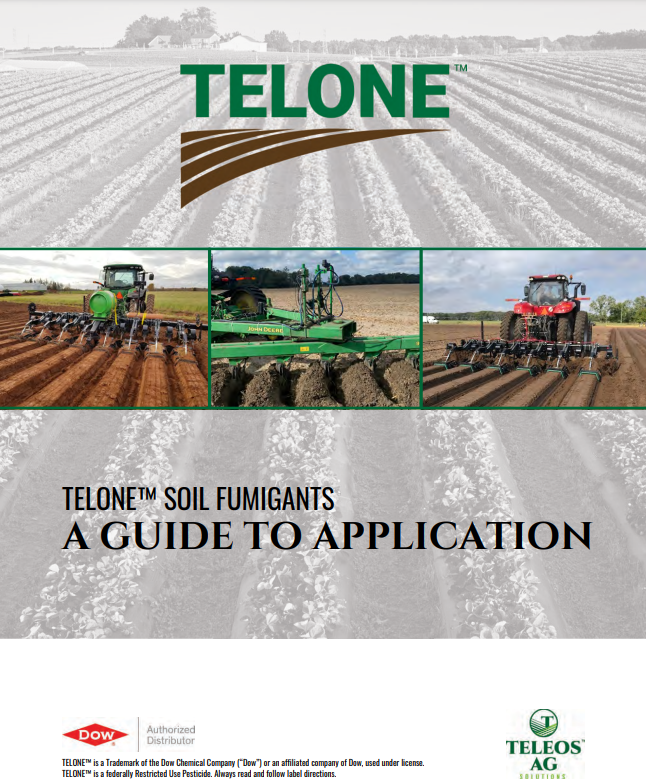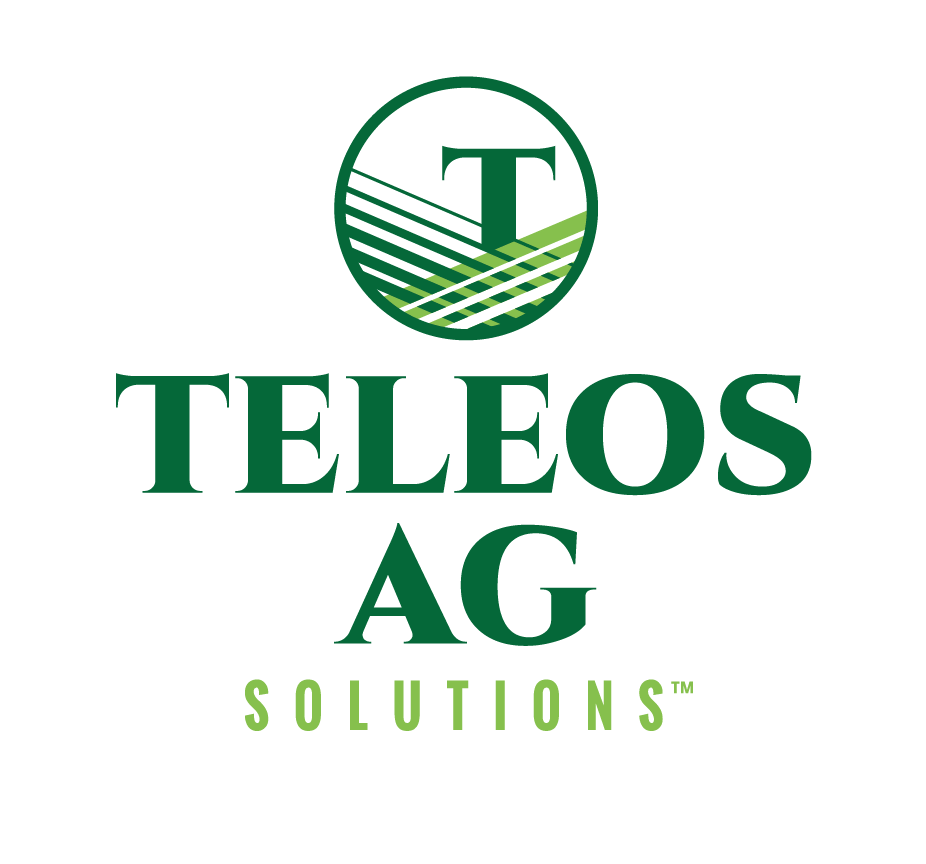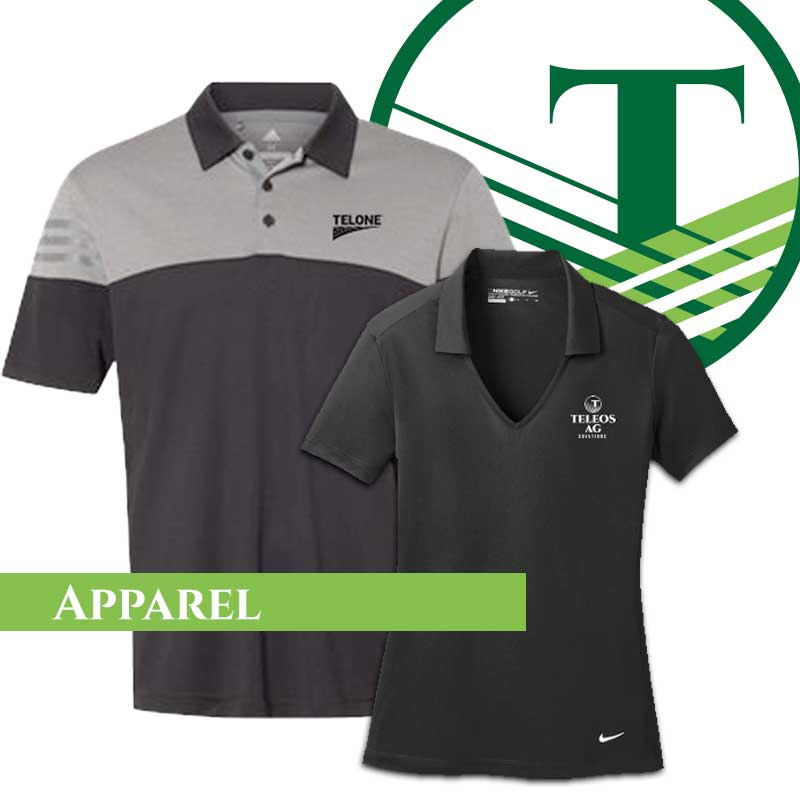Stewardship is one of our core values at Teleos Ag Solutions and we take it very seriously. That’s why we want to ensure that Applicators at the field level have the tools and resources they need in order to be good product stewards, too. This Application Guide provides TELONE™ users with valuable information before, during, and after a TELONE™ application. Helpful information covered in this Application Guide includes information on nematodes, calibration, equipment types, proper field conditions, and maintenance. Recommendations in this guide can also help maximize potential TELONE™ benefits.
This blog post is a full review of the Application Guide. If you would like to download a PDF version to review/print, click here.
Let’s dive in.
A COMMITMENT TO QUALITY AND STEWARDSHIP
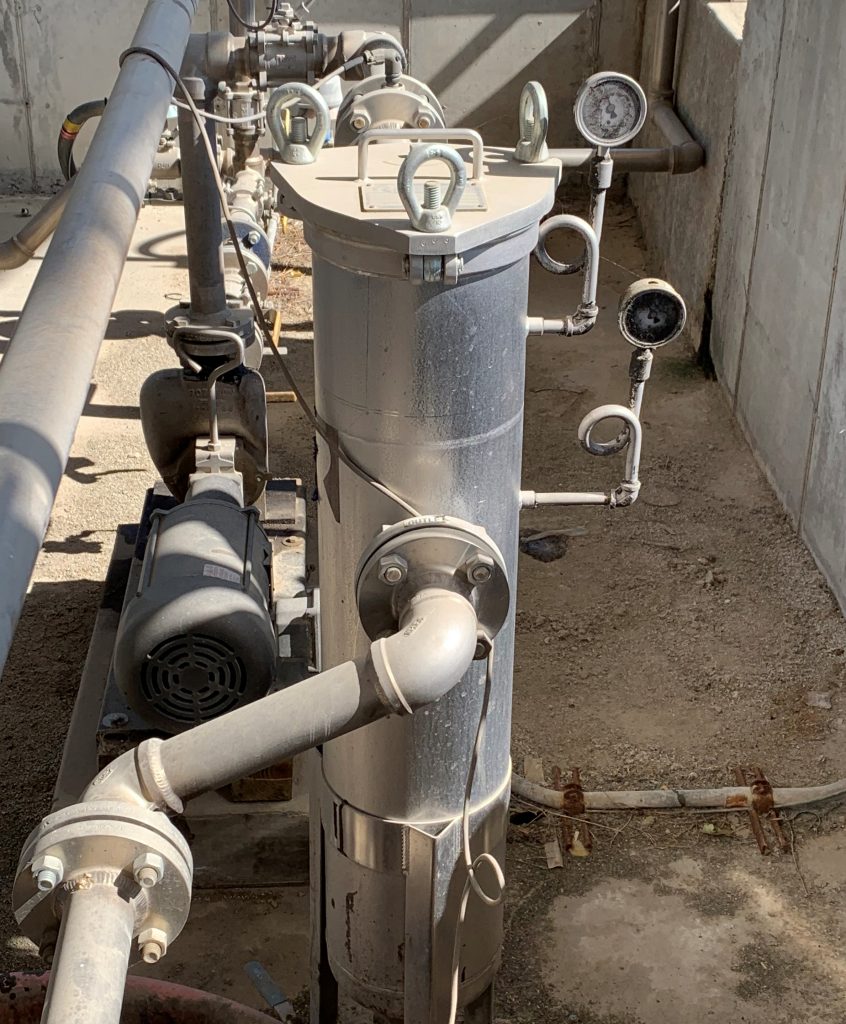
flows from railcars into bulk storage tanks.
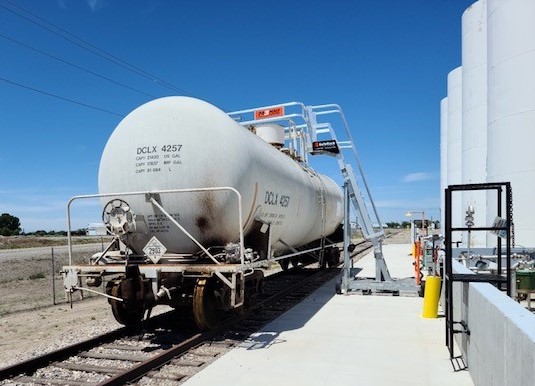
care and attention to quality.
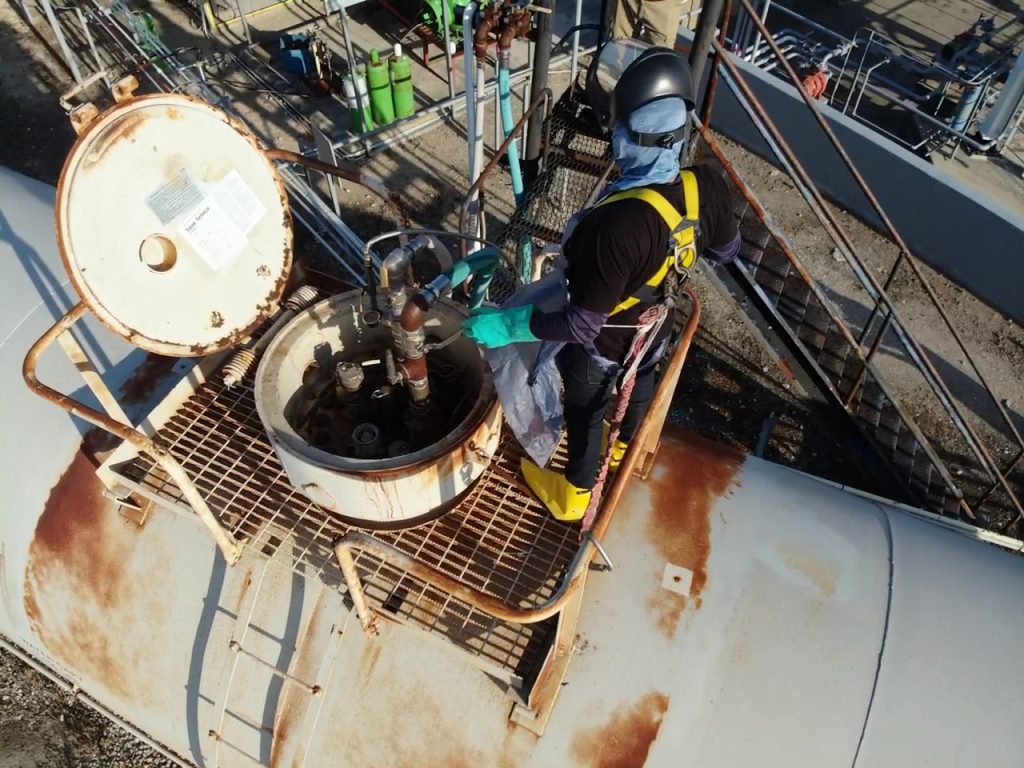
product integrity.
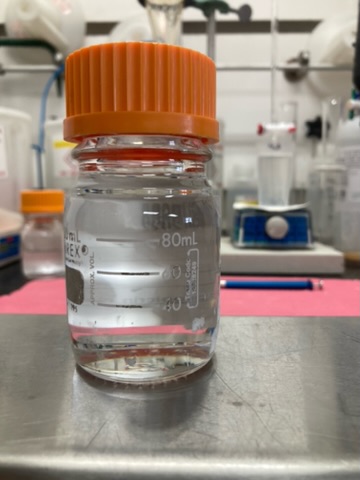
quality.
Teleos Ag Solutions strives to be an excellent steward of TELONE™ Soil Fumigant, handling it in a way that maintains product quality from manufacturing through distribution. At every point, our goal is to handle TELONE™ with care, and ultimately deliver quality product to users.
This Guide to Application is one more way of ensuring that users are equipped to handle and apply TELONE™ in a responsible way that produces maximum benefits.
NEMATODES AND OTHER SOILBORNE PESTS: HOW THEY DAMAGE CROPS
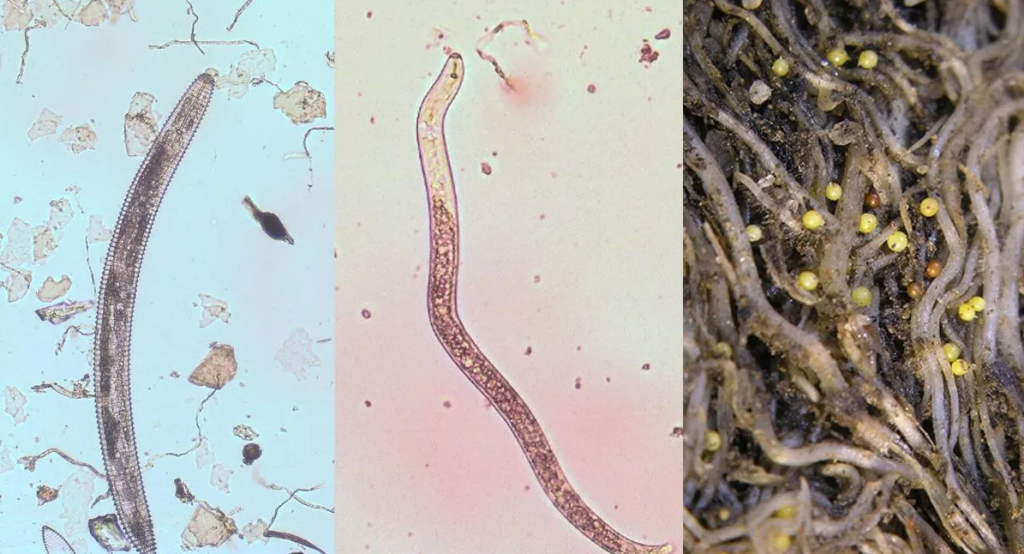
Damaging Crop Potential
Plant parasitic nematodes live underground and reach a size of only 1/64″ to about 1/10″ long, but these microscopic, threadlike roundworms can destroy crop potential and cause substantial losses in yield and quality. Some 2,200 species of nematodes attack plants. Capable of multiplying at an alarming rate, one female nematode can lay 500 eggs every 30 days and multiply into 24 million nematodes in one season.
The nematode feeds by puncturing the plant cell with a hollow, needle-like stylet and injecting enzymes to pre-digest its contents. This dissolves the cell contents, leading to lesions surrounding the feeding site. Nematode feeding can also cause abnormal cell enlargement, gall formation, root distortion, root tip injury, excessive root branching, and other forms of abnormal development Nematodes can stunt the plant by reducing its ability to take water and nutrients from the soil. This leads to nutrient deficiency and water stress symptoms above ground. Nematodes can also cause less visible disruptions of plant metabolism, reflected in reduced yields and crop quality.
Two basic types of root parasitic nematodes feed on crops:
- Endoparasitic nematodes enter and feed within the root system. Typical examples include the rootknot, lesion, and cyst nematodes.
- Ectoparasitic nematodes feed exclusively from outside the root tissue. Typical examples include stunt, stubby root, sting, and citrus nematodes.
PROVIDING ENTRY POINTS FOR DISEASES
Nematodes predispose plants to diseases by reducing plant vigor and providing entry points for pathogens. Soilborne fungi and bacteria threaten a plant’s life and can cause extensive damage and yield loss.
INSECTS CAN DAMAGE ROOTS
Symphylans (centipede-like insects) can be serious pests, feeding on roots and other below-ground parts of many plants. Most commonly found in moist soils with high organic content, symphylans move up and down in the soil as temperatures and water levels fluctuate. They can be hard to detect. Wireworms can also damage crops. Hard to detect, they move up and down in the soil similar to symphylans. Mole crickets are much easier to detect and can also damage the crop.
TESTING FOR NEMATODES
Ectoparasites will be recovered in the soil, primarily. Endoparasites are generally recovered in higher numbers in the root samples. Therefore, always try to get feeder roots in abundant supply in nematode samples for greater accuracy.
A soil test can help identify whether or not a field has nematode problems. With reniform nematodes in particular, there may not be any symptoms other than depressed yields. Soil testing helps identify specific nematode species and establish population levels on a field-by-field basis. For best results, take soil samples when nematode populations peak, immediately following the susceptible crop. (Samples may also be taken prior to the growing season. Treatment decisions should be based on available threshold levels.
One composite sample of 20 to 30 cores should be taken for each 10 to 20 acres in a field. Sample in a “W” pattern.
Most types of nematodes live in the top two feet of the soil,so sampling to a depth of 6″–18″ will generally give a good idea of the overall population. Obtaining accurate results from soil tests requires care in taking and handling soil samples.
Common causes of error include:
- Not taking enough samples
- Sampling in an inconsistent pattern
- Improper storage and shipping
- Sampling only the soil when the nematode is in the root
- Not taking post-treatment and/or pre-harvest samples to determine the need for additional pest management practices
- Not using plastic or plastic-lined bags (paper bags let the sample dry out, killing the nematodes)
Samples should be placed in a plastic bag, kept cool, and promptly delivered to the laboratory since only live nematodes show up in soil Tests.
Use a reputable laboratory and submit all samples to the same laboratory. If using different laboratories, evaluate results carefully, since reporting procedures vary.
Some nematodes live in the root (endoparasites) and some live on the root (ectoparasites). Therefore, it is very important to know how to sample. Both soil and root samples are necessary to ensure identification of all the nematodes.
HOW NEMATODES SPREAD
Nematodes thrive under continuous cropping and short rotations. Tillage tools spread nematodes throughout infested fields and even carry them into new fields. Nematodes also spread through irrigation water drawn from sources fed by the runoff of infested fields.
22 COMMON NEMATODES
Relative sizes of nematodes. Plant Parasitic species range in length from 1⁄64” to about 1⁄10”.
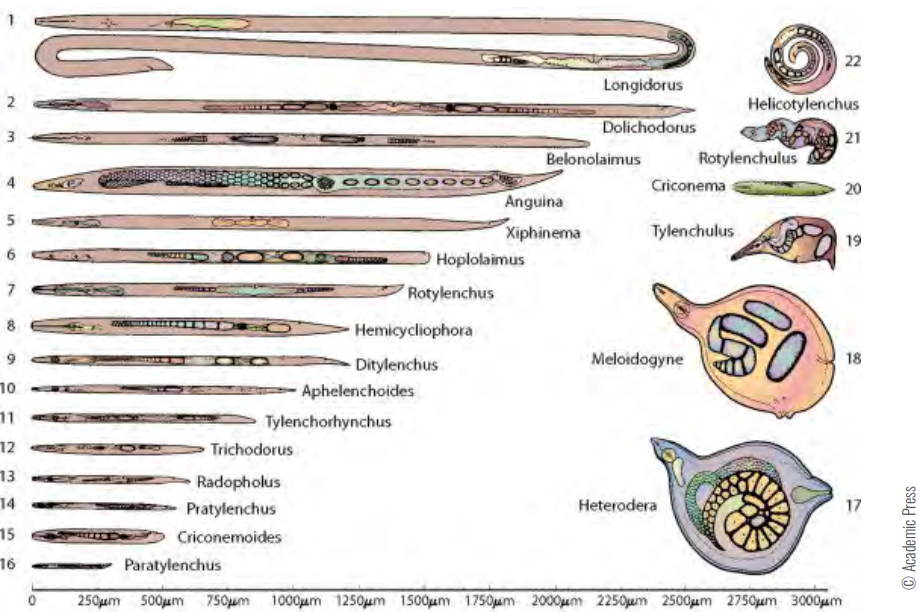
CLASSIFICATIONS OF COMMON NEMATODES
| ECTOPARASITES | ENDOPARASITES |
| Ring Nematodes | Rootknot Nematodes |
| Sting Nematodes | Lesion Nematodes |
| Stubby Nematodes | Cyst Nematodes |
| Reniform Nematodes |
TESTING FOR OTHER SOIL PESTS
Wireworms and symphylans can be sampled using sifting screens. Wireworms can also be baited. Take soil samples at the depth where a pest most likely lives at that time of year. Post-treatment and/or pre-harvest sampling is recommended to determine the need for additional pest management practices. Symptomology of these pests are different from nematodes. The damage is expressed in various degrees and visual symptoms.
NEMATODES CONTROLLED BY TELONE™
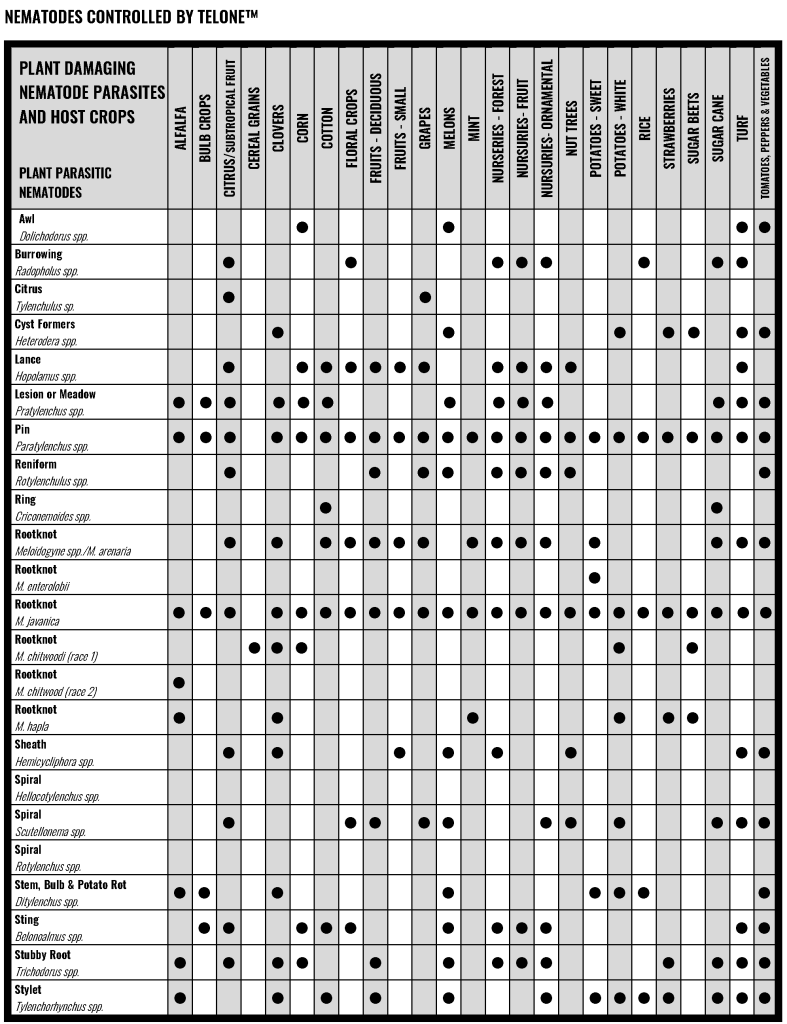
APPROVED CROP USES FOR TELONE™ SOIL FUMIGANT
TELONE™ Soil Fumigant is recommended for control of nematodes to be planted to crops that include, but are not limited to:
VEGETABLES
- Asparagus
- Beans
- Beets, red
- Black-eyed peas
- Broccoli
- Brussels sprouts
- Cabbage
- Cantaloupe
- Carrots
- Cauliflower
- Celery
- Collards
- Corn
- Cowpeas
- Cucumbers
- Eggplant
- Endive
- Garlic
- Horseradish
- Kale
- Kohlrabi
- Leeks
- Lettuce
- Melons
- Mustard greens
- Okra
- Onions
- Parsnips
- Peas
- Peppers
- Pimentos
- Potatoes
- Pumpkins
- Radishes
- Rutabaga
- Salsify
- Shallots
- Spinach
- Squash (summer)
- Squash (winter)
- Sweet potatoes
- Swiss Chard
- Tomatoes
- Turnips
- Watermelons
FIELD CROPS
- Alfalfa
- Barley
- Birdsfoot Trefoil
- Buckwheat
- Clover
- Corn
- Cotton
- Flax
- Grasses
- Hops
- Kenaf
- Lespedeza
- Millet
- Milo
- Mint
- Oats
- Pasture grass
- Peanuts
- Popcorn
- Rye
- Safflower
- Sorghum
- Soybeans
- Sugar beets
- Sugarcane
- Tobacco
- Vetch
- Wheat
FRUIT AND NUT CROPS
- Almonds
- Apples
- Apricots
- Bananas
- Blackberries
- Blueberries
- Boysenberries
- Cashew Nuts
- Cherries
- Chestnuts
- Cranberries
- Currants
- Dates
- Dewberries
- Figs
- Gooseberries
- Grapefruit
- Grapes
- Hazelnuts (Filberts)
- Hickory Nuts
- Huckleberries
- Kumquats
- Lemons
- Limes
- Loganberries
- Nectarines
- Olives
- Oranges
- Peaches
- Pears
- Pecans
- Persimmons
- Pineapple
- Plums
- Pomegranates
- Prunes
- Quince
- Raspberries
- Strawberries
- Tangerines
- Tangelos
- Youngberries
- Walnuts
NURSERY CROPS
- Floral plants & ornamentals
- Shrubs and bushes
- Forest, shade, fruit, nut trees
- Commercial sod
FUMIGATION: Effective Control with TELONE™ Soil Fumigant
THE VALUE OF TELONE™
TELONE™ soil fumigant economically and effectively manages many types of nematodes, viruses, bacteria, soil insects, and fungi. Applied as a pre-plant soil treatment, TELONE™ protects valuable vegetable, field, and nursery crops as well as planting sites for citrus trees, deciduous fruit trees, nut trees, berry bushes, and vines. By reducing nematode populations, TELONE™ gives plants time to establish a healthy root system that can support them throughout the growing season. The value to the grower is in the quality, quantity, packout, and uniformity of harvest.
TELONE™ will control pests in the soil treatment zone at the time of fumigation. It will not control pests introduced into the soil treatment zone after fumigation from sources such as contaminated soil, equipment, irrigation water, planting material, and nematodes that migrate up from below and from outside the fumigation zone.
HOW FUMIGATION WORKS
Nematodes live in the thin film of water that surrounds all soil particles. To control them, treatment must reach into their aqueous habitat and remain in contact with them at a strong enough concentration for an adequate length of time to deliver a lethal dose. Injected into the soil as a liquid, TELONE™ quickly volatilizes into a gas and permeates the soil mass.
As gas, it reaches nematodes and fungi by moving through air spaces in the soil mass and dissolving into the film of water that surrounds soil particles. Effective pest control with TELONE™ depends not only on its basic toxicity, but also on methods of application, rate of diffusion, degree of water solubility, adsorption and decomposition rate in the soil.
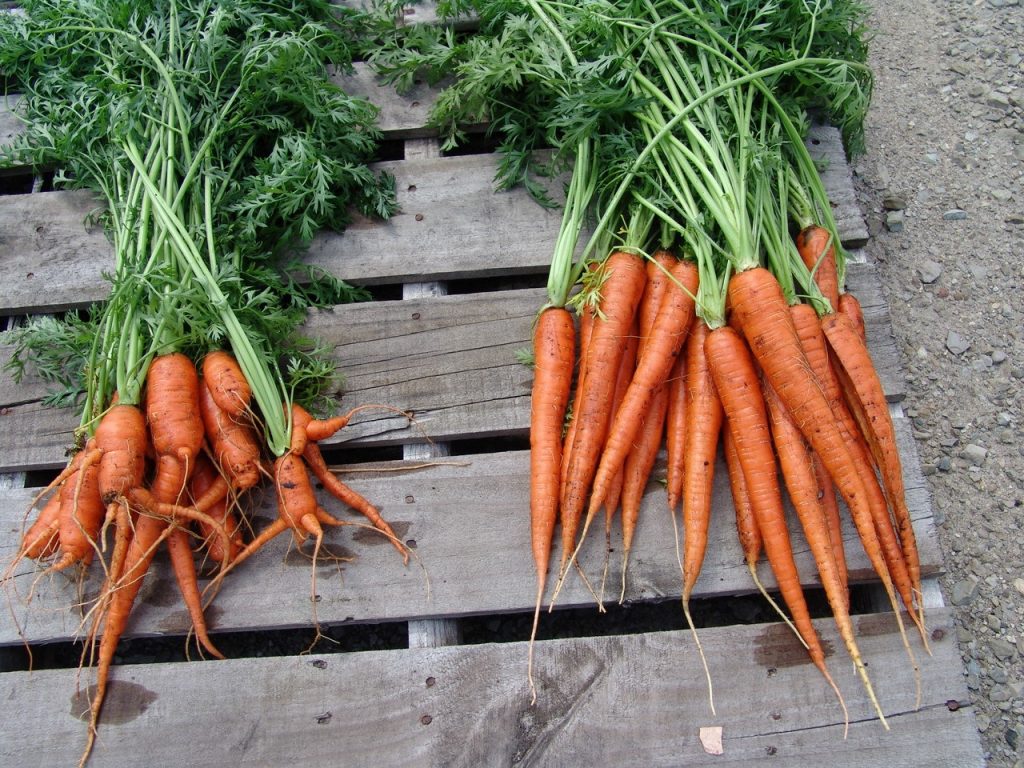
WHEN TO FUMIGATE
Many factors affect the decision to fumigate. It may be essential to fumigate as a regular practice when growing high-value cash crops (e.g., vegetable crops) due to the high risk of losing a precious stand and big investment in production costs. In other crops, when pre-plant pest populations indicate levels likely to cause economic damage, treatment becomes a worthwhile investment -and possibly an economic necessity. By combining information about pest species and populations, crop value, field history and yield expectations, a grower can make treatment decisions most likely to produce the maximum return on investment.
FUMIGATION VS. CONTACT NEMATICIDES
Fumigants (i.e. TELONE™) reach nematodes by moving primarily through soil air spaces and dissolving in soil water–a very effective way to control them. Contact nematicides must come in direct contact with nematodes. Contact nematicides may only prove effective under certain climate, field, and economic conditions. For optimum nematode control, use TELONE™ soil fumigant.
TELONE™ C-35 SOIL FUNGICIDE AND NEMATICIDE AID IN CONTROL OF THESE TYPICAL DISEASES
TELONE™ C-35 is a multi-purpose liquid fumigant, which contains 65% 1,3-Dichloropropene (TELONE™) and 35% Chloropicrin. It is used as a pre-plant soil treatment to control plant parasitic nematodes, symphyllans, and to help manage certain soil-borne diseases, including:
- Soil rot (soil pox)
- Verticillium wilt
- Bacterial Wilt
- Pink root
EXAMPLES OF NEMATODE/DISEASE INTERACTIONS THAT CAN BE MANAGED WITH TELONE™ C-35
- Rootknot nematode / Fusarium wilt
- Lesion nematodes / Phytophtora, Pythium, Fusarium, and bacterial wilt
- Sting nematodes / Fusarium
- Ring nematodes / Pythium
- Reniform nematodes / Fusarium, Verticillium, and Ryzoctonia
TELONE™ AIDS IN THE CONTROL OF ROOT DAMAGING INSECTS
- Symphylans
- Mole cricket
- Wireworms
DEEP-ROOTED WEEDS
At higher rates, TELONE™ can effectively reduce populations of deep-rooted perennial weeds such as Canadian thistle and bindweed.
USING CORRECT RATE OF TELONE™
When using TELONE™ products in moderate to heavy disease pressure:
Inbed – Use the maximum labeled rate of TELONE™ C-35
Broadcast or prebed – Use the maximum labeled rate of TELONE™ C-35 followed by chloropicrin inbed.
For additional information, call your TELONE™ Specialist.
PLANT PARASITIC NEMATODES CONTROLLED BY TELONE™:
- Awl (Dolichodorus spp.)
- Burrowing (Radopholus spp.)
- Citrus (Tylenchulus sp.)
- Cyst (Heterodera spp.) e.g., sugar beet, soybean,
- carrot, and wheat
- Dagger (Xiphinema spp.)
- Lance (Hoplolalmus spp.)_
- Pin (Paratylenchus spp.)_
- Reniform (Rotylenchulus spp.)
- Ring (Criconemoides spp.)
- Rootknot (Meloidogyne spp.) e.g., M. arenafia, M.
- javanica, M. chitwoodi, M. hapla
- Root lesion or meadow (Pratylenchus spp.)
- Needle (Longidorus spp.)
- Sheath (Hemicycliphora spp.)
- Spiral (Hellocotylenchus spp., Scutellonemaspp.,
- Rotyflenchus spp.)
- Sting (Belonolalmus spp.)_
- Stubby root (Trichodorus spp.,lenchorhynchus
- spp.)
- Stylet (Tylenchorhynchus spp.)
APPLICATION: Proper Field Conditions and Timing for Fumigation
APPLICATION TIMING
TELONE™ soil fumigant can be applied at any time of the year when soil conditions permit and pests are active. Conditions that allow rapid diffusion of the fumigant as a gas through the moist soil normally give best results. Because TELONE™ does not provide residual control of soil pests, it should be used as a preplant application prior to each crop.
Applications of TELONE™ in vegetables use a rate range, however, disease levels are hard to predict. For more consistent results, the maximum rates should be used. The rates require an appropriate length of time to dissipate from the soil, therefore, application timing should include this period needed for dissipation before planting. When using TELONE™ broadcast with coulter systems (i.e. Yetter equipment), leave the soil undisturbed and unplanted for at least 14 days after application of TELONE™.
When using TELONE™ broadcast application with the coulter system and then following with chloropicrin inbed, leave the soil undisturbed for 7 days after application of the TELONE™. Under optimum conditions, after the fumigation interval (7 days), allow a one-week waiting period for each 10-gallon broadcast application rate. Seed or transplants to be grown may be used as a bioassay to determine if TELONE™ is present in the soil at concentrations sufficient to cause plant injury. Do not plant if you can detect the odor of TELONE™ in the bed to be planted.
SOIL TEMPERATURE
When TELONE™ is applied, soil temperature must be between 40º F and 80º F at the depth of injection. When temperatures drop below 40º F, gas diffuses slower and application of TELONE™ is not recommended. TELONE™ products should be used when the targeted pest is in a susceptible state. Therefore, soil conditions must be appropriate to promote the susceptibility of disease, nematodes, and weeds to the agricultural products.
Broadcast fumigation gives you a jump on fieldwork, requires fewer fieldworkers, and provides a broader zone of protection against nematodes.
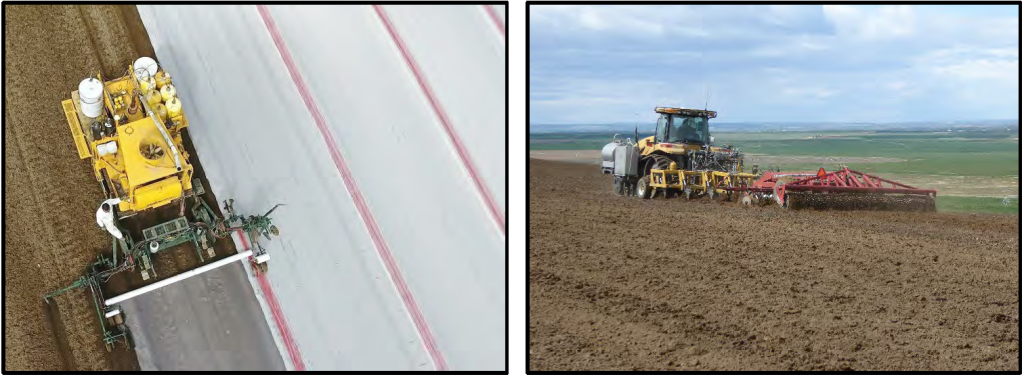
In the two examples above, you see a tarped broadcast application (left) and un-tarped application (right)
METHODS AND CONDITIONS FOR APPLICATION
SOIL MOISTURE
The soil must be moist from the soil surface to at least 12″ deep as determined by the feel method. The amount of moisture needed in this zone will vary according to soil type. If there is insufficient moisture at the 2″ to 6″ depth, the soil moisture must be adjusted before or during injection. If irrigation is not available and there is not adequate soil moisture, wait until conditions are correct. To conserve existing soil moisture, pretreatment or tillage practices should be done as close to the time of bedding as possible.
For fields with more than one soil texture, soil moisture content in the coarse-textured (sandiest) areas must comply with this soil moisture requirement. Whenever possible, the field should be divided into areas of similar soil texture and the soil moisture of each area should be adjusted as needed. Coarser textured soils can be fumigated under conditions of higher soil moisture than finer textured soils; however, if the soil moisture is too high, fumigant movement will be retarded and effectiveness of the treatment will be reduced.
Previous and/or local experience with the soil to be treated or the crop to be planted can often serve as a guide to conditions that will be acceptable. For assistance in determining soil moisture content of the area to be treated, consult your local extension service, soil conservation service specialist, or agricultural consultant (pest control adviser).
In general, when irrigation is available and surface soil moisture conditions are not likely to provide an adequate seal against fumigant loss, irrigation of the soil may be used to bring soil moisture content to the desired level.
The following descriptions will aid in determining acceptable soil moisture conditions by the “feel method.”
- For coarse soils (sand and loamy sand), there must be enough moisture to allow formation of a weak ball when compressed in the hand. Due to soil texture, this ball is easily broken with little Disturbance.
- In loamy, moderately coarse, or medium textured soils (coarse sandy loam, sandy loam, and fine sandy loam), a soil sample with the proper moisture content can be formed into a ball which holds together with moderate disturbance, but does not stick between the thumb and forefinger.
- Fine textured soils (clay loam, silty clay loam, sandy clay, silty clay, sandy clay loam, and clay), should be pliable and not crumbly, but should not form a ribbon when compressed between the thumb and forefinger.
The amount of soil moisture directly influences the movement of TELONE™ through the soil airspace. This affects the volume of soil treated and potentially the rate of re-infestation. In coarse-textured soil, such as sand, the maximum moisture level may be slightly higher due to larger soil air space. The opposite is true for fine-textured soils.
SEEPAGE IRRIGATION
Before applications of TELONE™, bring the soil moisture to field capacity for one week or longer. This puts the pests in a susceptible state. This results in hatched juveniles, respiring disease, and susceptible weed seed. Before application, lower the water level so that TELONE™ is not injected into the water. In preparation for application, dig a hole to find the water level. Do not inject TELONE™ into the water or saturated soil. When applying TELONE™ have the water level a minimum of 3″ below the injection point.
OVERHEAD IRRIGATION
Bring the soil moisture to a level where you are able to properly form a bed. Check to make sure injections of TELONE™ will not be made in water or saturated soil.
NO IRRIGATION
Wait until soil moisture conditions are right to properly form a bed. Check to make sure injections of TELONE™ will not be made in water or saturated soil.
FUMIGANT PLACEMENT
TELONE™ soil fumigant is to be injected at 12″ deep or greater, from the final soil surface. When injecting TELONE™, ensure that the product is not placed directly into water or below the hard pan. Where required, follow state specific requirements for proper placement.
METHODS OF SOIL PREPARATION
TELONE™ works best in seedbed-ready soils free of clods and undecomposed plant material. Since TELONE™ is drawn to organic matter, excess plant material is likely to impair the effectiveness of your fumigation. Excess debris in soil also can clog fumigation chisels and may harbor pests that will not be controlled by fumigation. Little or no crop residue should be present on the soil surface for effective fumigation.
In soils where compaction occurs in the treatment zone, till deeper than the plow pan for good fumigant penetration. This can be done as a pre-treatment operation or during application. In preparation for the use of TELONE™, the following are a few methods to be used:
- Seepage Irrigation:
- Till and level the field to be planted in a vegetable crop. This tillage should mix all plant debris. At the time of application of TELONE™, most plant materials should be decayed.
- At this point, a soil applied herbicide could be applied and incorporated. If incorporated herbicides are applied, great care should be taken not to dry out the soil, therefore, the soil should be sealed with a roller or water to prevent the soil from drying out.
- Once the herbicide is applied and the soil is sealed, ensure the soil is in proper condition to accept an application of TELONE™. Applying the soil-applied herbicide first and then fumigating has provided excellent results and reduced risk from potential herbicide injury.
- If the soil applied herbicide is applied after the application of TELONE™, make sure there has been ample time between the application of TELONE™ and the herbicide application for the TELONE™ to work. It is recommended that there be 7-14 days between the two applications without any disturbance of the soil. If a high amount of moisture is received into the field following the application of TELONE™, a tillage pass over the treated area will be needed.
- Non-Seepage Irrigation Areas:
- Applying the soil-applied herbicide first and then fumigating has provided excellent results and reduced risk from potential herbicide injury.
- Follow the same guidelines stated for Seepage Areas for TELONE™ and herbicide application timing.
- Applying the soil-applied herbicide first and then fumigating has provided excellent results and reduced risk from potential herbicide injury.
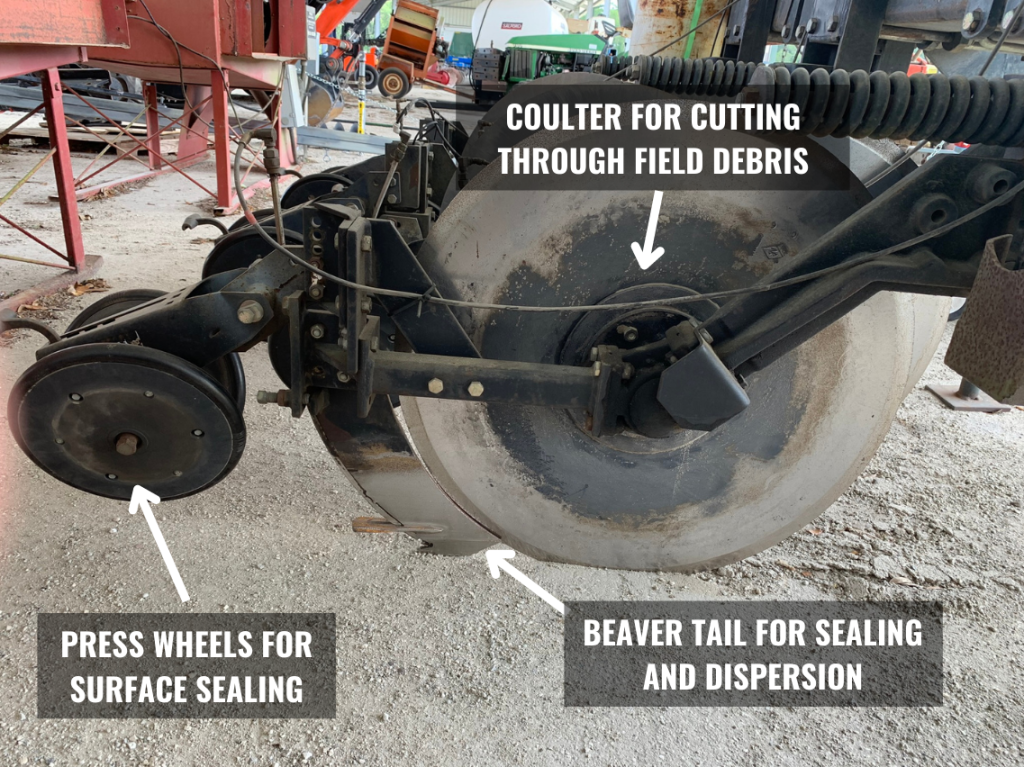
The above picture shows a detailed look at a Yetter rig. Yetter equipment is fast becoming the standard in deep-placement fumigant application. Three key features work together to achieve maximum performance for management of soilborne pests.
SOIL TYPE AND TEXTURE
To be effective, TELONE™ must move unrestricted through a continuous series of air spaces. Lack of air space severely limits movement of the fumigant, resulting in less than satisfactory control of soil pests.
Coarse-textured soils,such as sand or sandy loams, tend tocontain larger pore spaces than do fine-textured soils such as clays or peat soils.
In fine textured soils, the small pore space can restrict the diffusion of the fumigant. For this reason, fine-textured soils may also require a longer pre-plant interval.
PRECAUTIONS AGAINST RE-INFESTATION
As a pre-plant treatment, fumigants can only be expected to control the populations present in the zone of fumigation at the time of treatment. Care must be taken to prevent recontamination of the field. Growers should be aware of contamination sources such as movement of equipment, spreading of contaminated compost, nematode infested seed, or moving soil from untreated areas into a treated area. other possible sources of contamination include irrigation water, wind-blown soil, and deep nematode or insect populations outside the effective zone of fumigation.
SOIL FUMIGATION INTERVAL
Leave the soil undisturbed at least 7 days after an application of TELONE™ soil fumigant. A longer interval is required if soil becomes cold or wet. After the fumigation interval, to prevent phytotoxicity (potentially killing plants due to undissipated fumigant), allow the fumigant to dissipate completely before planting the crop. For broadcast applications of TELONE™, if heavy rains or low temperatures occur during the treatment period, a tillage pass over the treated area will be needed. Plants may be used as a bioassay to determine if TELONE™ is present in the soil at concentrations sufficient to cause plant injury. Do not plant if the odor of TELONE™ is present within the zone of fumigation.
APPLICATION RATES
The application rate of TELONE™ will depend on the following variables:
- Rotational pattern with a non-host crop
- Field history and nematode levels
- Yield potential
- Disease or nematode severity
- Broadcast or row treatment
Applications of TELONE™ in vegetables use a rate range, however, disease levels are hard to predict. For more consistent results, the maximum rates should be used. Consult the appropriate specimen label or your Teleos Ag Solutions TELONE™ Specialist for more details on the proper rate of TELONE™ for your specific crop and conditions.
RESTRICTED ENTRY INTERVAL
Only the following handler tasks may be performed in the treated area within 5 days after the application is complete:
- Assessing/adjusting the soil seal
- Assessing pest control, application technique or application efficacy
- Sampling air or soil for TELONE™
GROUNDWATER PROTECTION
PRODUCT STEWARDSHIP INFORMATION SUPPORTING GROUNDWATER PROTECTION
1,3-Dichloropropene is known to move through soil and under certain conditions has the potential to reach groundwater as a result of agricultural use. Application in areas where soils are permeable and groundwater is near the surface could result in ground water contamination. Do not apply within 100 feet of any well used for potable water. Do not apply this product within 100 feet from the edge of karst topographical features. In North Dakota, South Dakota, Wisconsin, Minnesota, New York, Maine New Hampshire, Vermont, Massachusetts, Utah, and Montana: Where groundwater aquifers exist at a depth of 50 feet or less from the surface, do not apply this product where soils are Hydrologic Group A.
KARST TOPOGRAPHY
To avoid direct introduction of 1,3-D into groundwater, applications in karst regions must be avoided. Karst topography is the irregular topography resulting from the solution of carbonate rock units (limestone, dolomite, and marble). Surface features that are associated with karst topography include sinkholes, caverns, springs, and sinking or disappearing streams. Areas where karst topography and surface features occur are indicative of areas where karst geology features (limestone and dolomite bedrock) are located near the surface, and the potential of groundwater contamination is high.
HYDROLOGIC GROUP A SOILS
The locations of Hydrologic Group A soils (mainly deep, well-drained and sandy or gravely soils with a high infiltration rate when thoroughly wet, and having low run-off potential) can be found in the County Soil Survey Report (USDA-NRCS)1.Once the map unit containing the field in question is identified in the soil survey report, the Hydrologic Group for that soil series can be determined from the “Water Features” table in the report. Soil survey data can also be obtained on-line at https://www.nrcs.usda.gov/ or using the State Soil Geographic (STATSGO) database (USDA-NRCS)2.
DEPTH TO GROUNDWATER
Depth to groundwater in unconfined aquifers can be determined by measuring the water depth in a monitoring well, irrigation well, or other domestic well. Alternately, approximate depth to water can be obtained from the USGS Ground Water Atlas of the United States or from local well driller’s logs. Any information obtained from the Soil Survey Reports, STATSGO database, or Ground Water Atlas should be considered approximate due to the scale at which that data is collected; and therefore, it may be necessary to verify information on Hydrologic Group Reports or water table depth obtained from these sources with actual in-field observations.
- Soil survey reports are obtained from your local United States Department of Agriculture-Natural Resources Conservation Service Office in your state or county.
- STATSGO information can be obtained from the National Cartography and GIS Center, United States Department of Agriculture, Natural Resources Conservation Service, P.O. Box 6567, Fort Worth, Texas 76115-0567.
- USGS Ground Water Atlases can be ordered by mail from USGS Information Services, Box 25286, Denver, CO 80225 or online at https://www.usgs.gov/search?keywords=Ground+Water+Atlas
UNDERSTANDING APPLICATION EQUIPMENT
Choosing the application method may simply be grower preference, but to make that choice, it’s important to have a basic understanding of the equipment.
YETTER IMPLEMENT
The Yetter implement utilizes a coulter system for injection and sealing. Each coulter includes three sealing points. The first sealing point is the use of a smooth rolling coulter. This smooths the sides of the injection trace, thus reducing the possibility of the fumigant re-entering the slit.
The second sealing point is the disruption of the injection trace just above the fumigant outlet tube hole. This is accomplished by the use of a flat piece of metal called a “beaver tail.”
The third point of sealing takes place at the soil surface. This is accomplished by the press wheels pressing closed the injection trace with minimal soil disturbance. When using the prebed (inbed), once the seals are made, soil is then placed on top with a prebedder or bed press. The plastic is then laid, and as the fumigant moves through air spaces in the soil, it fumigates the bed.
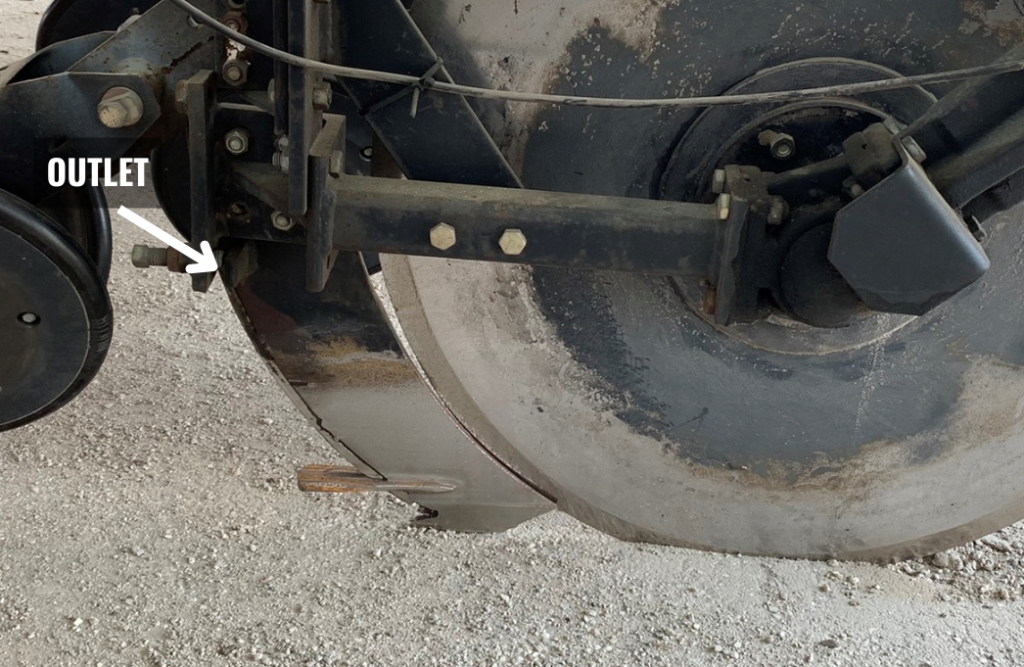
The deep-placement coulter system is effective in cutting through crop debris, plastic, and string that remain in the field after harvest. Each 30″ coulter blade cuts a smooth, narrow path through the soil about 12″ deep. On the trailing edge of the coulter at the 12″ level, is a knife with the drop tube attached. The drop tube disperses the fumigant deep into the soil where nematodes must be reached.
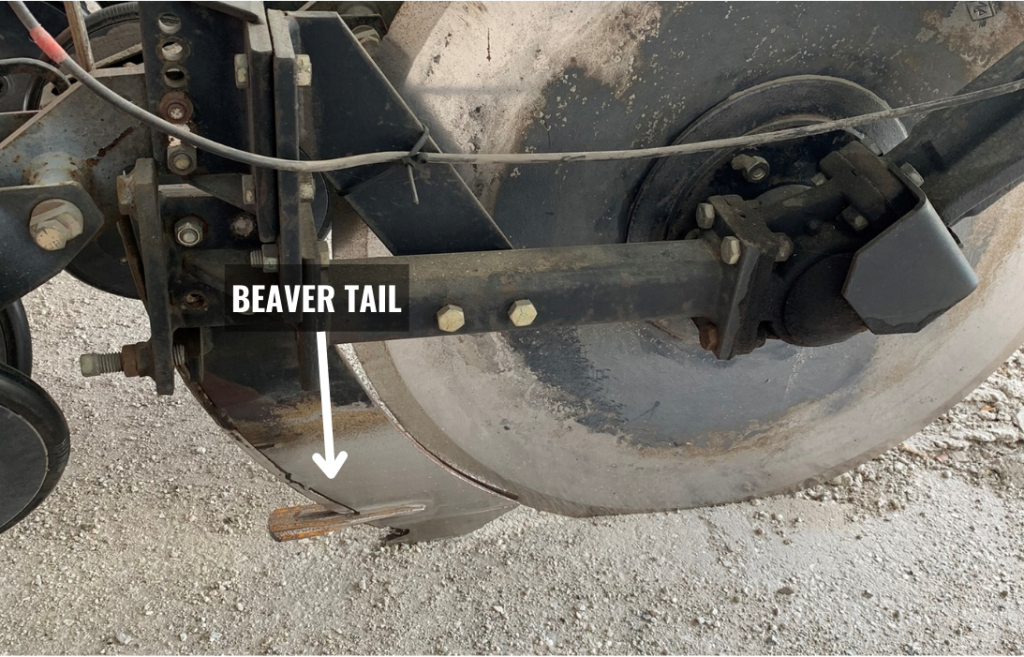
A small, steel blade called a “beaver tail” is mounted just above the point of injection. The beaver tail closes the knife traces below the soil surface.
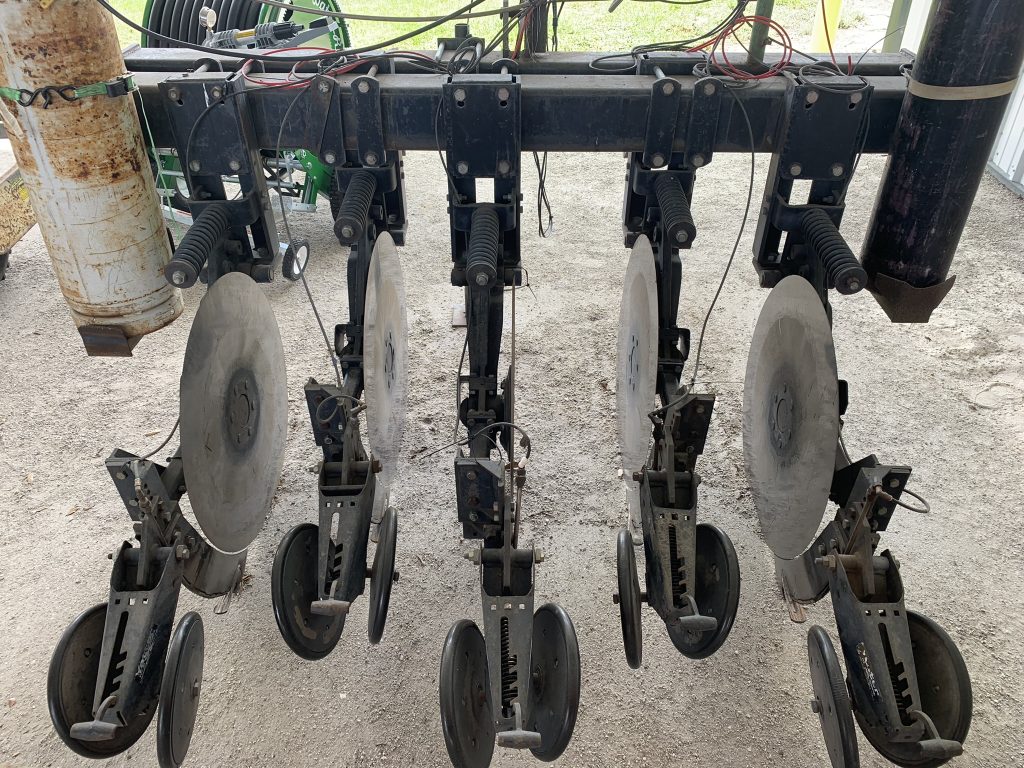
Trailing the coulters are a series of press wheels which seal the knife traces at the soil surface. The press wheels, as well as the coulters, are spring loaded to move easily and independently over rocks without raising the entire rig
BROADCAST VS. ROW APPLICATION
Broadcast refers to fumigation of the entire application zone. The shank spacing should generally be equal to the application depth. Broadcast applications are very useful when disease, nematode, or weed control is desired over the entire area. When using this method of application, the injections are at a minimum of 12″ depth.
Row applications fumigate the band of soil in the row where the crop will be planted. The fumigant must be placed at least 12″ deep from the final soil surface. Row applications can be made with the Yetter prebedder.
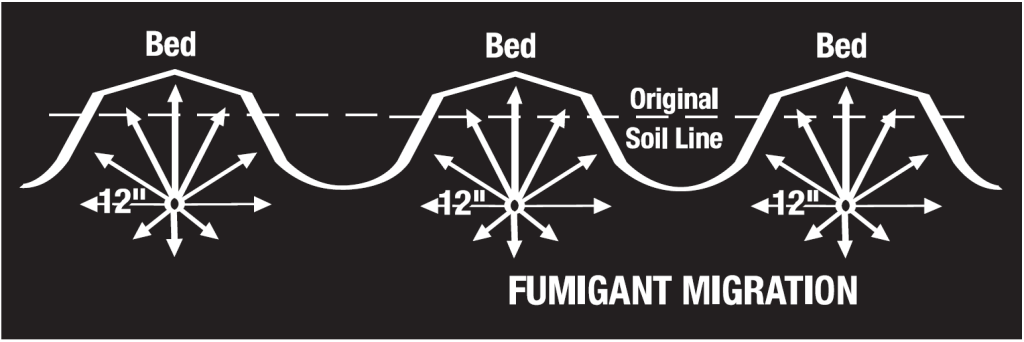
Row applications are more economical because less product is used than in a broadcast application. Growers are currently using this method and are most familiar with it. However, workers need to wear PPE in the field at application. Growers should consider the following elements before choosing the most appropriate application for their specific operation: treated area, PPE, number of workers, etc.
CALIBRATION: Adjusting the Fumigation System
CALIBRATION OVERVIEW
Equipment must be calibrated. This section presents one method, but any method which accurately and safely ensures proper application rate is acceptable. The method used must minimize exposure of TELONE™ soil fumigant to atmosphere (i.e., open calibration with TELONE™ into catch containers is unacceptable)
Start with the correct total amount and divide it equally to each shank. We recommend using an in-line flow rate monitor (e.g., Raven, King).
Factors affecting calibration are dependent on the metering system used. Shank spacing, orifice size, delivery pressure, and tractor speed affect all systems. After setting up the system, confirm calibration with one of these methods:
- Measure the amount applied over a known area by weighing the cylinder or container.
- Determine flow rate by dispensing an alternate fluid such as water into collection cups, then use measured field speed to calculate actual application rate.
Water has different physical properties. Use conversion charts if water is used, or your application rate will be wrong. Also, water in the system must be flushed completely from the system or corrosion may occur quickly.
Calibration begins by applying the correct total amount and dividing it equally to each shank.
For complete calibration instructions, ask your local TELONE™ Specialist for more information. If orifices will not be used, calculate calibration using the Calibration and Setting Variable Area Flow Meters chart below.
CALIBRATION
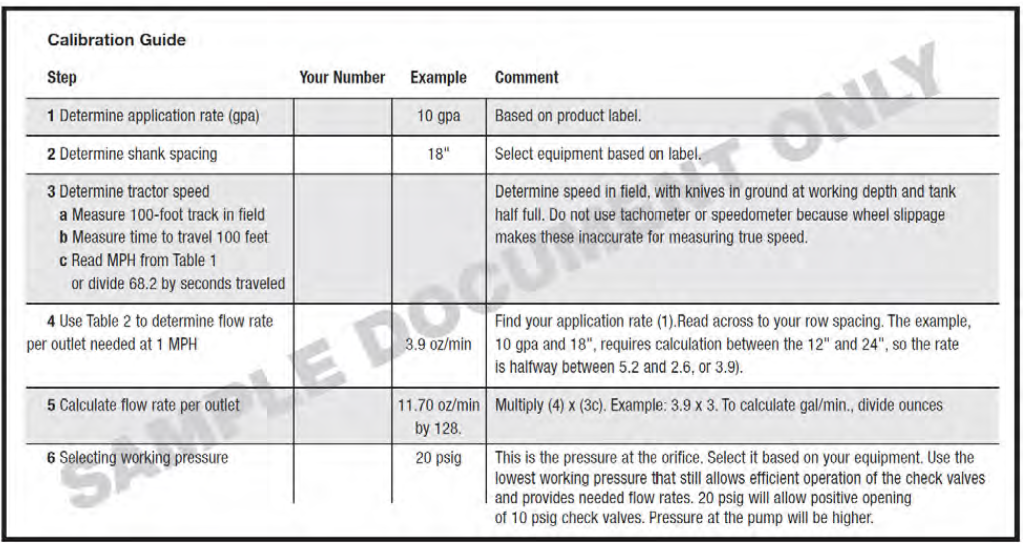
CALCULATING SPEED IN MILES PER HOUR
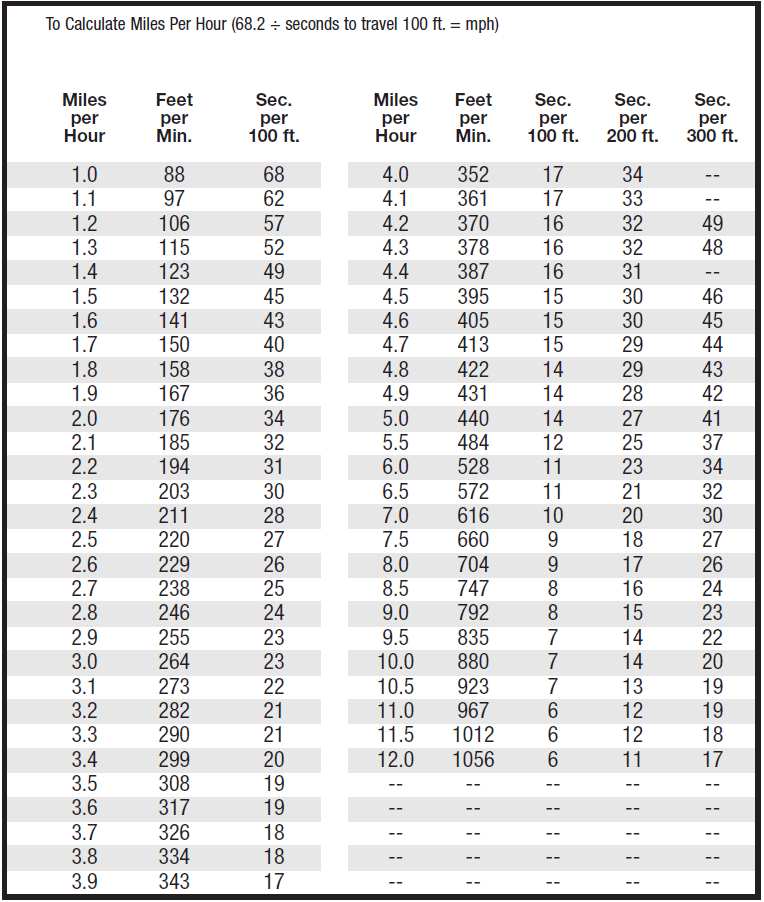
SETTING FLOW METER
The percent reading on the flow meter is the setting at which to apply the correct rate of TELONE™ soil fumigant. This calculation/setting should always be verified during the application of the first pig/cylinder/tank.
Setting Flow Meters for Fumigants
- The volume that travels through a flow meter varies based on the density or specific gravity of the product being used. For fumigants, the more “dense” the fumigant, the slower it travels through a flow meter.
- When flow meters are not properly calibrated to the product being used, the result is either too much or too little product being applied.
Flow meters are usually calibrated using water as a standard. Flow rates shown on flow meters must be converted from water to TELONE™. These must be converted to TELONE™ also.
CORRECTING VARIABLE AREA FLOW METERS FOR DIFFERENT FUMIGANTS
The flow rate of product through a variable area meter (i.e. ball float type) depends on the product characteristics. Largely the density, or specific gravity, of the product affects fumigant flow rates. Higher density “heavy” products travel more slowly through a flow meter.
If flow meters are not calibrated to the product being used, too much or too little product will be applied.
Some meters have scales that read “Percent of Full Flow.” Others may indicate gallons per minute of water.
The conversion factors in the chart below are based on correlation equations made specifically for variable-area type flowmeters (Rotameters), and should not be used for other types of meters.
CONVERSION FACTOR CHART

For example:
To learn how much TELONE™ would be applied, multiply 2.33 gpm by the appropriate conversion factor for TELONE™. Some results:
TELONE™II 2.33 gpm X 0.906 = 2.11 gpm
TELONE™ C-35 2.33 gpm X 0.864 = 2.01 gpm
NOTE: If nitrogen is used to push the liquid, use lower pressures to decrease risks of equipment leaks.
CALIBRATION AND SETTING VARIABLE AREA FLOW METERS
Calculations
Use the steps below to calculate the flow rate you need to achieve the desired application rate. The example shown is for:
- An in-bed application of TELONE™ C-35 with a one-bed applicator
- Bed width of 36″
- 35 gal/acre broadcast rate
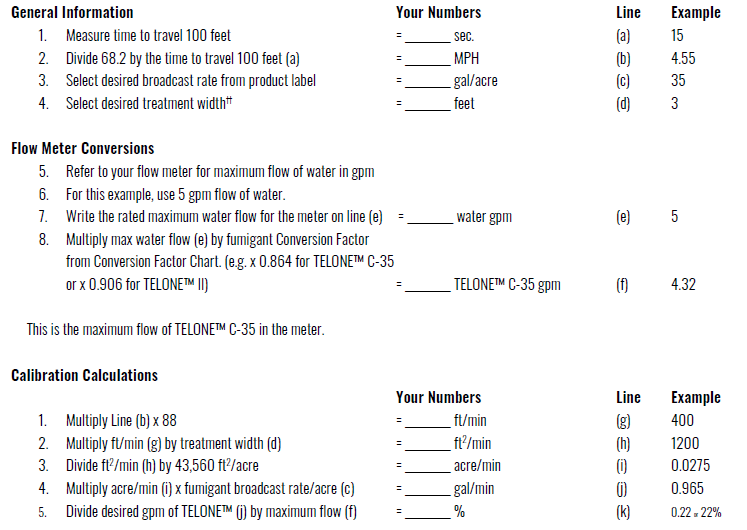
If the meter is marked as percent of full flow, the number on Line (k) is the meter reading needed to achieve the desired application rate. Adjust the meter to maintain the flow rate. If the meter is marked in gpm of water, use Line (k) to calculate what flow rate level is needed. For example, if the meter is rated for 5 gpm of water at maximum capacity, take (k) x (Rated flow for water), or 0.22 x 5 = 1.1 gpm. In other words, the meter should read 1.1 gpm to achieve the desired 35 gpa broadcast rate in the example.
††The width, or band, of treated area in a row under plastic or the broadcast applicator.
EQUIPMENT: Maximize Fumigation Potential
TELONE™ soil fumigant may be applied in various ways in plasticulture. The better the seal, the better the fumigant performance. Tests show that the Yetter broadcast rig and Yetter inbed rigs provide excellent results. Each one offers opportunities and challenges to performance in plasticulture. Start with the correct total amount and divide it equally to each shank. We recommend using an in-line flow rate monitor (e.g., Raven, King).
YETTER BROADCAST
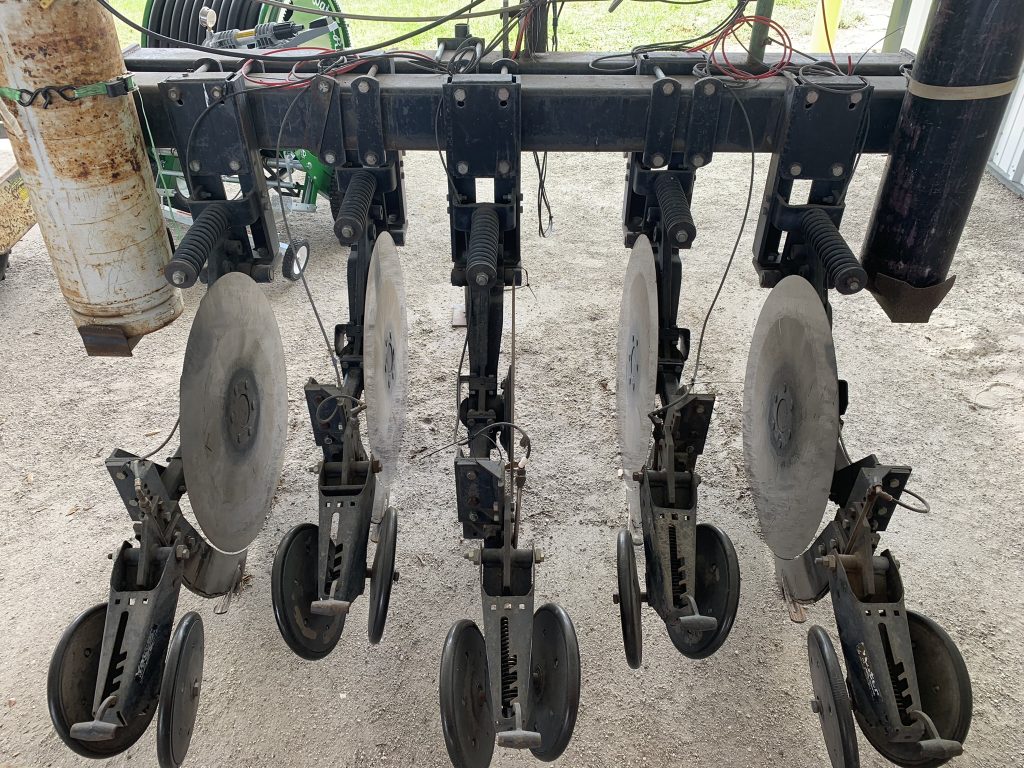
This equipment provides the opportunity for growers to apply TELONE™ soil fumigant products with minimal worker exposure. Some of the considerations that need to be made before this application method is adopted are: broadcast applications require more product than inbed, and soil sealing is critical to the performance. Broadcast applications provide a broader zone of protection, are easily adapted to various herbicide programs, minimize worker exposure, reduce problems associated with plastic and tape debris, and provide deep placement of fumigant for nematode control.
This application method requires two people at the field site. One worker oversees the application and helps hook up pigs/cylinders. The second person operates the equipment. This results in a minimum number of workers at the treated field.
One of the best ways to get the performance out of your fumigant is to properly seal the soil to hold the fumigant in longer. The Yetter coulter system cuts through previous crop debris, like tape, plastic, and string and therefore, doesn’t leave large gaps in the soil through which fumigant can escape. If disease pressure is high, additional fumigant can be added to the bed at plastic laying. In moderate to heavy disease pressure, use the maximum rate of TELONE™ C-35.
YETTER PREBED (INBED)
This implement uses the same coulter system as the broadcast implement. The difference is that up to three coulters are placed in the area of bed formation and then a prebed or bed is formed after the injection. This method requires less material than broadcast application, allows immediate sealing with plastic, and provides deep placement for excellent nematode control. The coulter cuts through plastic, tape, and string, and allows easy application of additional fumigants at the time of bedding. In moderate to heavy disease pressure, use the maximum rate of TELONE™ C-35, followed by chloropicrin in the bed.
OTHER IMPLEMENTS
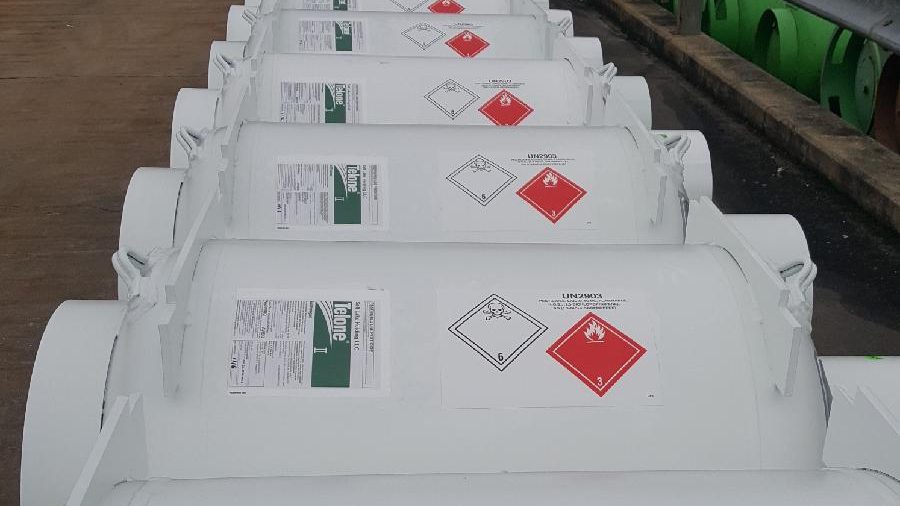
With dry-disconnect couplings, this 110-gallon mini-bulk cylinder allows you to apply TELONE™ through a closed system.
Other implements may be used for application in bedded culture. The key features to have on this equipment are: the coulter for cutting string and plastic and methods for sealing the chisel trace above the fumigant outlet and at the soil surface. Using a ripper bedder to prebed is an option. If string or plastic are a problem, the addition of a coulter may be essential in proper application. Once the prebed is complete, immediately form the bed and cover with plastic.
APPLICATOR TANK
Those who desire to use a closed system may use pigs/cylinders designed to be used in conjunction with a nitrogen pressure system. Hook the nitrogen line to the top of the pig/cylinder and the bottom outlet is hooked to the control system.
DELIVERY SYSTEM
A flow meter is used to set the amount of TELONE™ soil fumigant to be applied, which varies based on the different products used in vegetable applications.
SHUT-OFF SYSTEMS
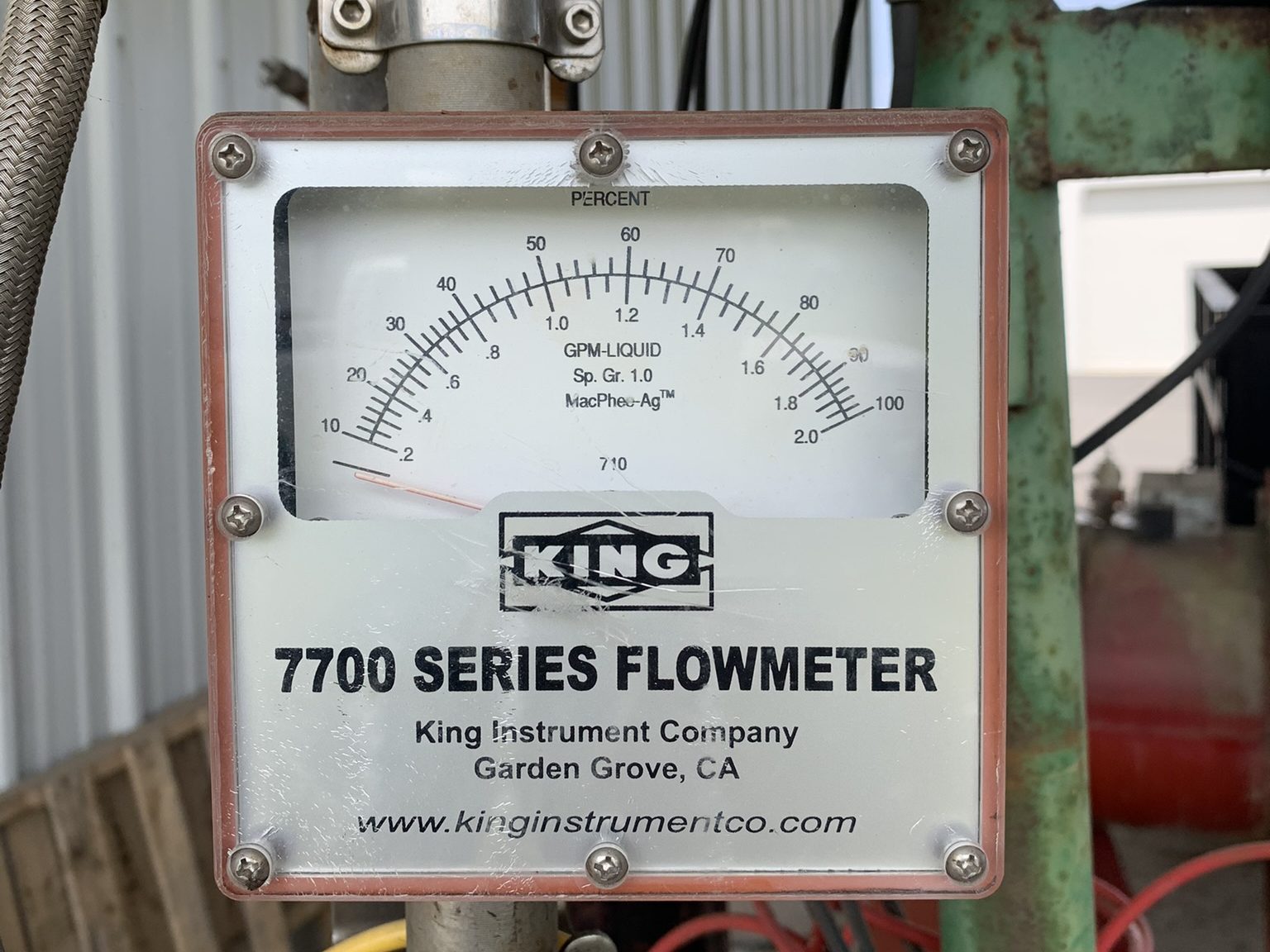
A flow shut-off device must be placed at, or as near as practical to, the discharge point of the liquid. This may include a ball, poppet, or diaphragm check valve, or a full-flow shut-off device such as an electric or pneumatically actuated valve. Check valves placed above the orifice may improve their performance. An alternative to shut-off devices is a purge system which clears the line of all liquid. This is the best of the options. The nitrogen purge line can be regulated from the seat of the tractor. While the equipment is still running and before the rig is pulled out of the ground, purge the lines. Shank check valve performance may also be improved by:
- isolating the upstream pressure by placement of a main line shut-off or by pass valve prior to the manifold, and
- limiting lines from the manifold to the shank shut-off device to 1⁄4″ or less.
The volume of fluid in the tube below the shank shut-off device should be minimized by using the smallest diameter tubing which can accommodate the expected range of application rates. Tubing from the manifold to the discharge point cannot exceed 1⁄4″ in diameter. In most cases, a 1⁄8″ or less inside diameter tube below the shank shut-off device is sufficient.
Tubing and hoses must be high-density or cross-linked polyethylene, nylon, Teflon®, or polypropylene. Braided stainless steel hose is also commonly used.
YETTER BROADCAST OR PREBED When setting up this equipment, use 1⁄8″ ID lines to create the necessary back pressure to get even flow to each shank. Also include the purge line into the system to reduce air emissions. Each shank should be placed 12″ apart and set to run a minimum of 12″ deep.
PROPER HANDLING OF TELONE™: Closed System
The 110-gallon mini-bulk pig/cylinder used for delivering TELONE™ soil fumigant weighs approximately 1,600 lbs. when fully loaded. It can be forklifted from front, back, or side. It arrives at your farm with tamper-evident wire seals that must be cut before removing the cover plate. With dry-disconnect couplings, this mini-bulk cylinder allows you to apply TELONE™ through a closed system. Anyone involved in the hook-up operation must wear proper protective clothing and have proper safety equipment at the site.
BEFORE UNLOADING
- Check for broken or tampered seals.
- Check container for leaks or other defects.
- If any indication of tampering or defects are found, do not use this cylinder and contact your dealer or local Teleos Ag Solutions TELONE™ Specialist.
UNLOADING PROCEDURES
- Read and follow label directions for product use and personal protective equipment requirements.
- Do not open any fittings or valves other than the nitrogen inlet valve and outlet valve.
- Connect product hose to flow meter and pig/cylinder.
- Connect nitrogen cylinder to top inlet and open nitrogen bottle valve.
- Open product outlet valve.
- Open nitrogen inlet valve and check for leaks. If leaks are found, shut off all valves immediately. If no leaks are found, the pig/cylinder is ready.
- When empty, close outlet valve on cylinder. Close nitrogen cylinder valve, then close nitrogen inlet valve on the cylinder.
- Disconnect hose to flow meter and nitrogen bottle.
Before returning the container, refer to the Operating Procedures posted on the TELONE™ soil fumigant cylinder for complete details on returning the container.
Size, dimension, and valve types on cylinder outlets may vary by supplier.
Check for broken or tampered seals. Check container for leaks or other defects. If any indication of tampering or defects are found, do not use this cylinder and contact your dealer or local Teleos Ag Solutions TELONE™ Specialist.
Do not tamper with regulator and hose assembly.
SOIL SEALING: Keep the Fumigant Where It Works
SOIL SEALING
Since TELONE™ turns into a gas when injected, it must be properly sealed into the soil to maintain an effective dose adequate to control nematodes or other pests. (“Dose” relates to the concentration of TELONE™ in the soil and the length of time the concentration is maintained.)
TELONE™ is injected into soil by chisels. As these chisels move through the soil, they leave a chisel “trace” or weak area in the soil. The chisel trace usually fills with soil and is not visible. However, the trace behind the chisel can contain more air space than the soil between chisels, providing a path of least resistance for the gas to move up and through the soil.
If fumigant moves up and though the soil too fast, the dose in the soil between chisels can be reduced. As a result, a smaller volume of soil is actually treated, allowing faster re-infestation of pests into the treated zone.
The most important step in keeping fumigant in the ground is to seal the soil by eliminating the chisel trace and compacting the soil surface, which helps minimize the possibility of any emission of 1,3 Dichloropropene (1,3-D) into the atmosphere.
Immediately after application, disrupt the chisel trace and then follow with a compression device to seal the soil.
Even when applications utilize tarping to aid in the sealing operation, it is necessary to eliminate the chisel trace between the depth of placement and tarp. If this is not done, the fumigant will move very quickly to the surface where the tarp restricts its movement. While the soil surface may be effectively treated, the total volume of soil treated below the tarp will be reduced.
Some application rigs are designed to be self-sealing in good soil conditions, thus eliminating the need for additional passes over the field.
These application rigs include the ability to place the TELONE™ 12″ or greater in depth, disrupt the chisel trace above the fumigant outlet hole, and seal the trace at the soil surface with minimal soil disturbance.
To check your field for proper sealing, try to force a shovel handle or probe into the soil in an attempt to find the chisel trace. If it easily presses in more than a couple of inches, the application may benefit from another sealing operation.
THE VALUE OF ELIMINATING THE CHISEL TRACE
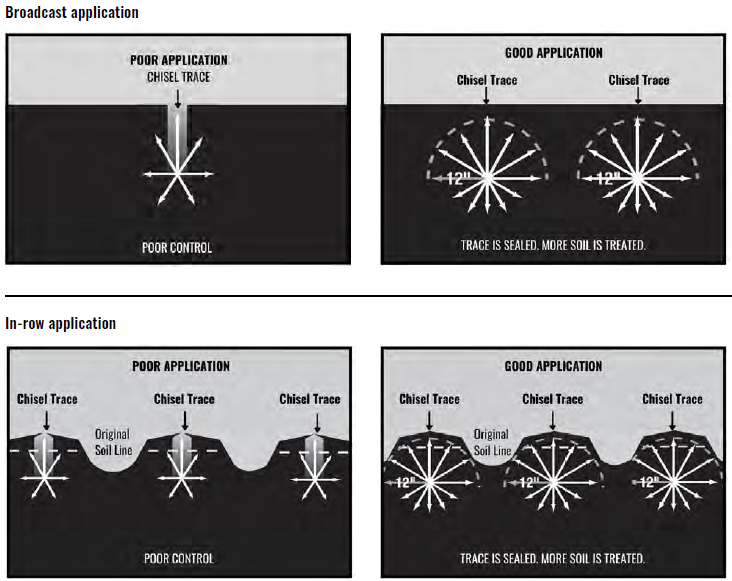
TIPS FOR BETTER SOIL SEALING
- Apply TELONE™ soil fumigant under proper soil conditions.
- TELONE™ works best in seedbed-ready soils free of clods and crop residue. Applying TELONE™ under too-wet conditions can prevent the knife trace from sealing, allowing fumigant to escape. Wet soils also reduce lateral diffusion, causing a higher concentration of fumigant in the knife trace.
- Inject TELONE™ soil fumigant 12″– 20″ below the final soil surface.
- Use the appropriate implement or application equipment to ensure the best possible elimination of the chisel trace and compaction of the soil surface.
- In general, no irrigation should immediately precede fumigation; however, when surface soil moisture conditions are not likely to provide an adequate seal against fumigant loss, a very light sprinkler irrigation to wet the top 1″– 2″ of soil may be used to bring soil moisture to the desired level.
- If sprinkler or seepage irrigation are not available, wait for rain to get the soil in the right conditions.
MAINTENANCE: Fumigation Equipment
REGULARLY CHECK AND REPLACE HOSE LINES Since TELONE™ soil fumigant and sunlight can cause hoses to deteriorate over time, always check all hose lines and fittings. Look for cracked, split, or broken hose lines. Each year, make it a practice to replace hose lines to ensure safe, effective application.
KEEP DRY-DISCONNECTS CLEAN When not in use, always keep dust caps on all male and female dry-disconnects to protect the seals. Consult the manufacturer for more information on maintenance and warranty work.
FLUSH APPLICATION SYSTEM WITH DIESEL FUEL OR PURGE LINES WITH NITROGEN At the end of the season after completing all applications of TELONE™, flush tank, pump, and hoses with fuel oil, kerosene, diesel fuel, or similar petroleum solvent. Drain and fill the pump system with fuel oil or a 50/50 mix of motor oil and fuel oil. Never use water to flush the system.
Replace hose lines each year to ensure safe, effective application. Also maintain check valves and other components.
When not in use, keep dustcaps on all male and female dry-disconnect couplings to protect seals.
Regularly replace in-line filters.
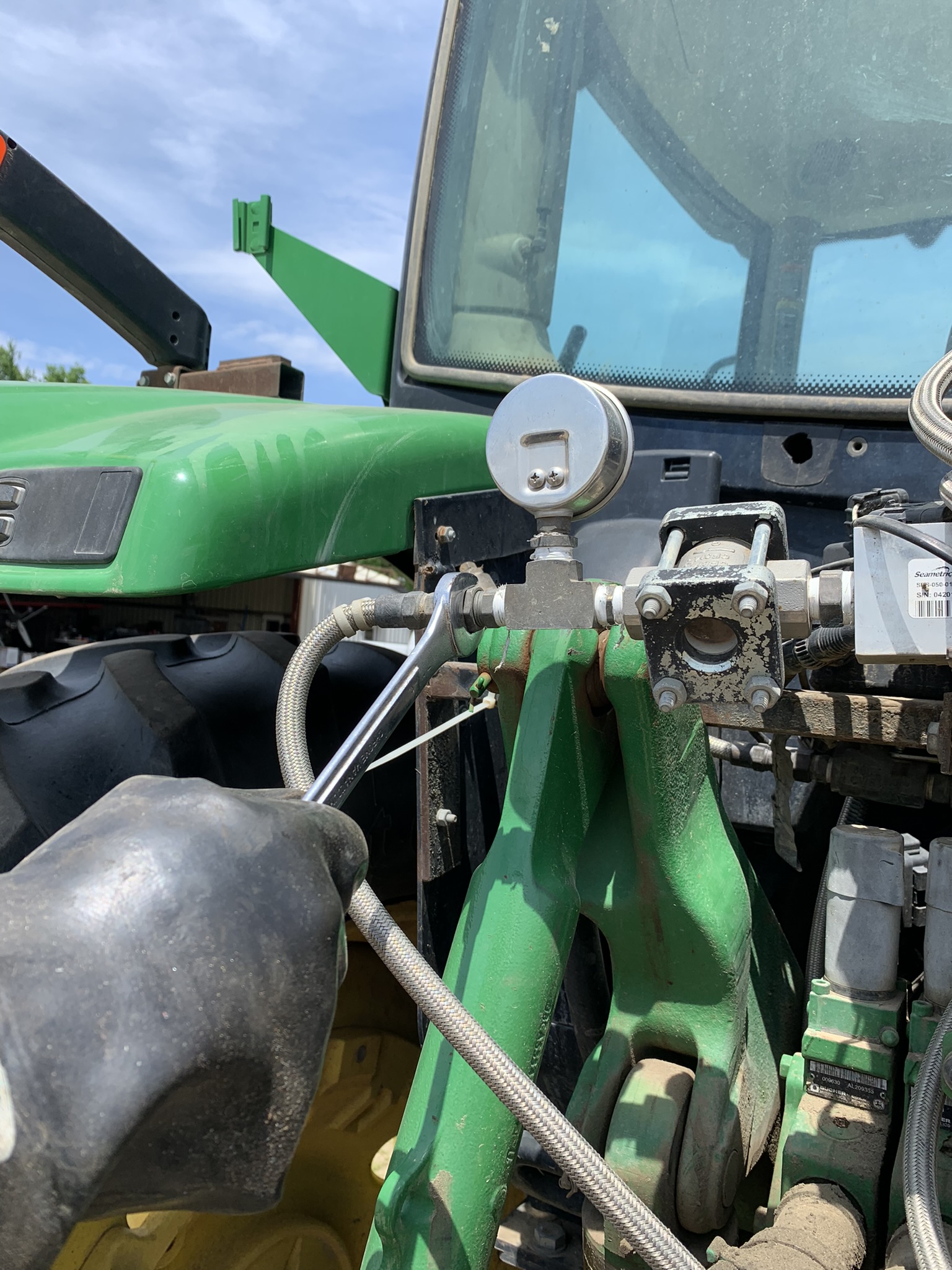
Replace hose lines each year to ensure safe,
effective application. Also maintain check valves
and other components.
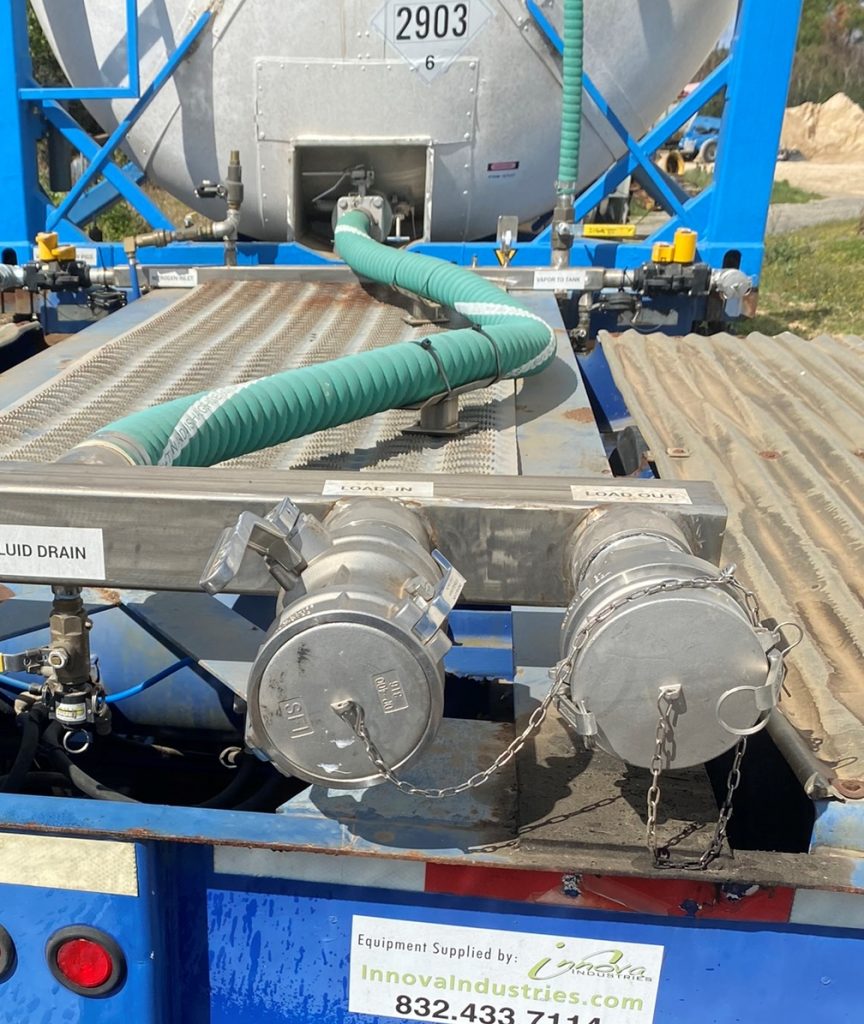
When not in use, keep dustcaps on all male and female
dry-disconnect couplings to protect seals.
APPENDIX – MATERIALS TO USE WITH TELONE™ SOIL FUMIGANT
HOSES, PIPES, AND TRANSFER LINES
Hoses, pipes, and transfer lines should be rated for the maximum working pressure of the system. Compatible materials include:
- Nylon
- Steel
- Cross-linked polyethylene
- Brass
- High-density polyethylene
- Copper
- Teflon®
- Kynar
- Polypropylene
- Low-density polyethylene
- Stainless steel
- Braided stainless steel hose
The following are recommended for fixed piping:
- Schedule 40 seamless carbon A53
- Schedule 10-40 stainless steel
SEALS, GASKETS, AND PACKING
Viton A seals have been used satisfactorily. However, they may deteriorate rapidly if sliding or rotary seals are operated dry. Seal, gasket, and packing materials include:
- Teflon®
- Nylon
- Polypropylene
- Kalrez®
- Kynar
- Santoprene®
- Chemraz®
- Viton® (F/G grade best)
PUMPS, VALVES, AND FITTINGS
Stainless steel is the best recommendation for pump shafts. Mild steel may be used but will rust and may cause premature seal failure. Pump shaft materials include:
- Stainless steel
- Brass
- Monel®
- Cast iron
- Steel
- Hastelloy®
Compatible materials for pump housing include:
- Stainless steel
- Modular iron
- Cast iron
- Brass
MATERIALS TO AVOID
Hazardous decomposition may occur with release of hydrogen chloride when TELONE™ comes into contact with aluminum, magnesium, or zinc and its alloys. This decomposition may occur in a reaction and may also liberate heat.
So, do not use containers, pumps, or other transfer equipment made of aluminum, magnesium, zinc, cadmium, or their alloys. Under certain conditions TELONE™ may be severely corrosive to such metals (Note: zinc includes “galvanized”).
DO NOT USE:
PVC, Buna-N, neoprene, and fiberglass have the potential to disintegrate and therefore should not be used in service with TELONE™.
Valves and fittings may be made of:
- Stainless steel
- Steel
- Teflon®
- Brass
- Cast iron
- Kynar®
- Copper
- Nylon
- Polypropylene
SCREENS AND STRAINERS
Make sure the pressure rating on the strainer exceeds the pressure output on the system. Compatible materials for strainers and screens include:
- Stainless steel
- Monel®
- Brass
- Nylon
- Copper
- Polypropylene
Teflon® is a registered trademark of Dupont Corporation
Kalrez® is a registered trademark of Dupont Corporation
Chemraz® is a registered trademark of Green Tweed & Corporation
Santoprene® is a registered trademark of Monsanto Corporation
Viton® is a registered trademark of Dupont Corporation
Monel® is a registered trademark of International Nickel Corporation
Hastelloy® is a registered trademark of Haynes International, Inc.
Kynar® is a registered trademark of Elf Atochem North America, Inc.
APPENDIX – EQUIPMENT SUPPLIERS
- CHEMICAL CONTAINERS, INC.
- P.O. Box 1307 (33859)
- 413 ABC Road (33853)
- Lake Wales, FL
- 1-800-346-7867 TOLLFREE
- 1-863-638-1407 PHONE
- 1-863-638-1863 FAX
- sales@chemicalcontainers.com
- COASTAL AGROBUSINESS*
- 2210 Carolina Leaf Road
- Greenville, NC 27835
- 1-800-758-1828 TOLLFREE
- 1-252-758-0308 PHONE
- 1-252-758-0317 FAX
- lawrencemcglohon@coastalagro.com
- MIRUSSO ENTERPRISES, INC.
- 1-561-251-5187 PHONE
- jmirusso@aol.com
- TRIEST, INC.
- P.O. Box 448
- Greenville, NC 27835
- 1-844-878-5178 PHONE
- customerservice@triestag.com
- SCHLAGEL MANUFACTURING
- 4154 Buttermilk Road, Torrington
- WY 82240
- 1-888-889-1504 PHONE
- info@schlagel.net
- YETTER MANUFACTURING COMPANY
- P.O. Box 358
- Colchester, IL 62326
- 1-800-447-5777 TOLLFREE
- 1-309-776-3222 FAX
- yetterco@netins.net
SAFETY EQUIPMENT SUPPLIERS
- CARDINAL SAFETY COMPANY
- 16110 Coventry Lane
- Spring Lake, MI 49456
- 1-616-935-7208 PHONE
- info@cardinalsafetyco.com
- CHEMICAL CONTAINERS, INC.
- P.O. Box 1307 (33859)
- 413 ABC Road (33853)
- Lake Wales, FL
- 1-800-346-7867 TOLLFREE
- 1-863-638-1407 PHONE
- 1-863-638-1863 FAX
- sales@chemicalcontainers.com
- LABELMASTERS
- P.O. Box 46402 (60642-0402)
- 5724 N. Pulaski Road (60654)
- Chicago, IL
- 1-800-621-5808 TOLLFREE
- www.labelmasters.com
- GEMPLER’S
- 100 Countryside Drive
- P.O. Box 270
- Belleville, WI 53508
- 1-800-382-8473 TOLLFREE
- www.gemplers.com
- LAB SAFETY SUPPLY
- P.O. Box1368
- Janesville, WI 53547-1368
- 1-800-356-0783 TOLLFREE
- 1-800-543-9910 FAX
- custsvc@labsafety.com
- www.labsafety.com
For additional suppliers, consult your fumigation distributor or certified dealer.
*Coastal AgroBusiness is also a Safety Equipment Supplier
TELONE™ is a Trademark of the Dow Chemical Company (“Dow”) or an affiliated company of Dow, used under license. TELONE™ is a federally Restricted Use Pesticide. Always read and follow label directions.
- EQUIPMENT COMPATIBILITY: METAL SELECTION FOR TELONE™ by TELEOS SOIL FUMIGANT - December 16, 2025
- STORAGE SECURITY FOR TELONE™ by TELEOS - October 16, 2025
- TIP SHEET: PLACARDING FOR BULK SHIPMENT RETURNS - August 15, 2025
